2020 VW Vento 1.0 TSI road test review
The Volkswagen Group plans to go the distance on turbo-petrol power alone, and for 2020, the Polo and Vento are only available with a 1-litre TSI engine, with either a six-speed manual or six-speed torque convertor to get the job done. We've driven the Polo 1.0 TSI, and came away very impressed. It's a similar story with the Skoda Rapid 1.0 TSI, which uses the same engine. So is the 2020 VW Vento 1.0 TSI pretty much the same thrills in a different skin, or does it go further?
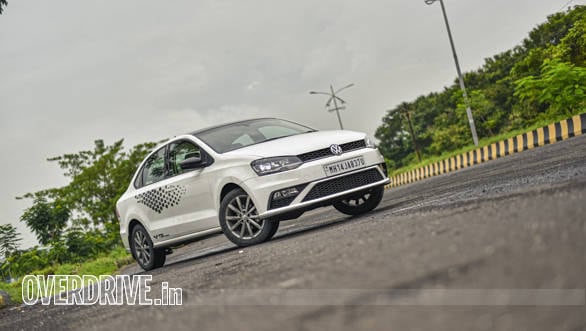
What's changed?
Aesthetically speaking, not much; honeycomb-pattern stickering on this TSI Edition car notwithstanding. Everything introduced with the Vento facelift last year is carried forward, meaning you get the updated LED headlight cluster with LED DRLs, GTI-inspired honeycomb grille, smarter-looking bumpers, smoked tail lights and 16-inch wheels.
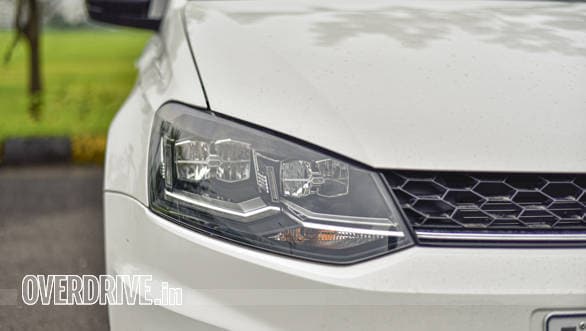

Realistically, it's more than you would get with the Rapid 1.0 TSI, for example, which carries forward the styling changes introduced in 2016 (with new alloy wheels), which means you often don't know if it's a brand-new car that's just passed you, or a well-kept four-year old one.
Inside the Vento is more familiarity, with a classic, well-built cabin and large boot; and just enough space to seat five in a pinch, though four will be comfortable. The VW has a nicer touchscreen infotainment (with smartphone integration and reverse camera) than the Skoda, though I do wonder how hard it would've been to add a USB port or two in here.
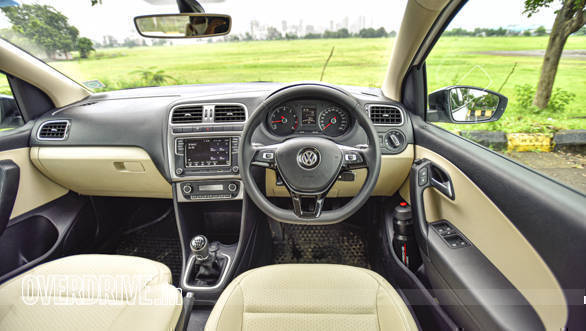

The most noteworthy change is under the hood, with the addition of a six-speed gearbox alongside the new engine. The smallest from the EA211 family, it's now the only engine on offer, replacing the old naturally-aspirated 1.6 MPI petrol, the turbocharged 1.2 TSI and the 1.5 TDI diesel. I've said it before, and will say it again - this 1-litre TSI engine has the potential to be a future classic, for its smile-inducing punch and tunability. Really.
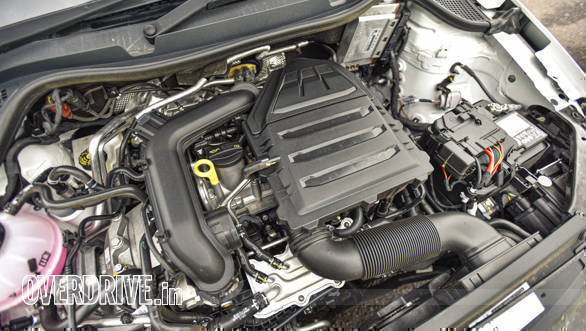
And though it can be seen as "only" a 999cc three-cylinder engine, it's got more power than the earlier petrols, and matching the diesel's 110PS. Specifically, it makes its 110PS (a 5PS bump over the 1.2-litre TSI) at 5,000-5,500rpm, a 500rpm wider band than that engine. Its max torque of 175Nm@1,750-4,000rpm comes in 250rpm later than the 1.2 TSI, but the Vento has lost weight considering how much lighter the 1-litre TSI engine and gearbox are (about 10kg but losing the DSG has dropped a further 21kg). This despite the engine carrying a a GPF/OPF particulate filter which serves as a secondary catalytic convertor of sorts, to drastically cut emissions. And though the internationally available engine has 5PS more or 25Nm more torque depending on the application, this engine still has all the fancy technical bits, like a high pressure fuel rail, direct injection, forged crank and connecting rods, and an electronically-controlled wastegate actuator, all which no doubt helped win this engine the 'International Engine of the Year' tag multiple times. Coming back to its tunability, we hear pushing upwards of 140-150PS reliably doesn't really take much at all.
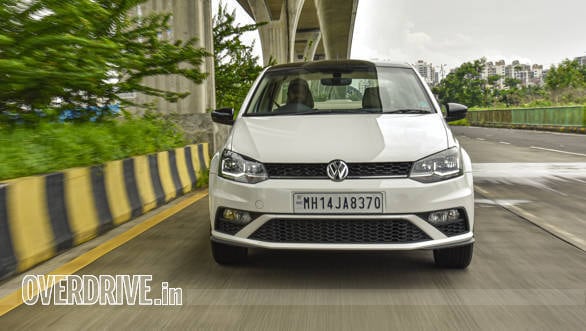
How does it drive?
To sum it up, the Vento 1.0 TSI offers the same thrills of the Rapid 1.0 TSI (which we've raved about), while being noticeably more comfortable over bad roads, thanks to a marginally-softer suspension setup. Noise insulation on the Vento and Rapid may only be a hair better than in the Polo, but it's enough to help you forget that it's a three-cylinder motor under most circumstances. Vibrations are also well-controlled to a large extent, and this engine feels more refined right through the revs than the similar three-cylinder turbo-petrol that finds home in the new Hyundai Verna Turbo.
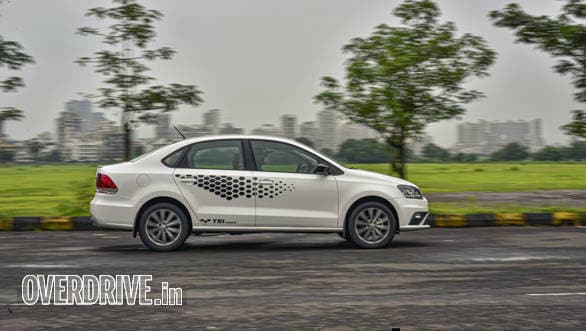
Driving around the city, the first thing you'll realise is that you need a slight dab on the throttle to get going from standstill. And while the engine does feel like it starts building response only over 1,500rpm, we'd equate the engine response below that to any other naturally aspirated cars in the segment. In fact, it ultimately ends up being as tractable, even if you stick it in a higher gear, as our roll-on figures will show later. With this engine really coming into its own after 3,000rpm, it has a duality to its personality most other NA cars can't offer. There's even a good rush of power at the top, right up to its 6,200rpm redline, with fairly accurate shifts from the six-speeder making you want to row through the box. The top-end rush even makes it feel more rewarding to push the Vento hard than even the larger 1.5-litre TSI EVO in the VW T-Roc! In terms of outright performance, we managed a 0-100kmph dash in 9.9 seconds (in the wet), about the same time the Rapid 1.0 TSI and new Honda City posted in the dry. It's also a clear second quicker than the discontinued Vento 1.2 TSI mated to the 7-speed DSG.
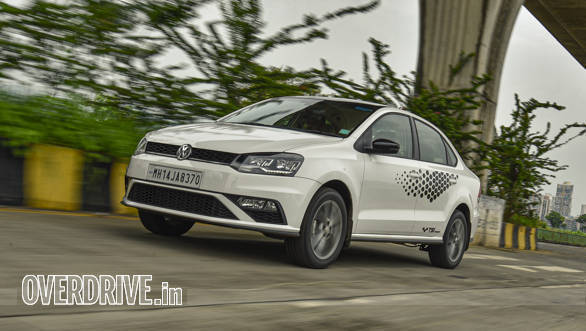
In our roll-on tests, the Vento posted a 30-50kmph (in third) time of 4.4s, a 50-70kmph (in fourth) time of 3.6s and a 60-80kmph (in fifth) time of 6.9s, making it 0.4s slower, 1.3s quicker, and 1.2s slower than the Rapid's respective times. Which, honestly, makes no sense to us, as the two are mechanically identical, and wet conditions usually don't make a difference in roll-on times. As for fuel efficiency, the Vento managed 9.8kmpl in our city route, and 16.1kmpl on the highway, which is again, very similar to the Rapid's figures, and is slightly disappointing for an engine that touts efficiency so highly. With discs/drums handling braking, the 100-0kmph braking performance of 43m/3.1s in the wet is quite something too, bringing the Vento to a halt with no drama.
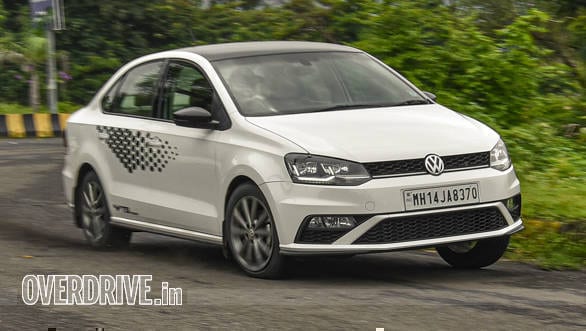
Where the Vento does start to differentiate itself from the Rapid, is in the slightly more polished way it handles broken roads and speedbreakers, especially when driven at city speeds. Sure, it does have a bit more rebound over speed breakers, but for the family-oriented driver, it equates to a more comfortable ride. That does mean you feel a tad more understeer than the Rapid when you're pushing hard, but it's a very slight difference right at the edge of its performance envelope. The steering is reassuringly-weighted, and the Vento feels very solid even at triple digit speeds, even with the softer suspension setup. Overall, the Vento remains one of the best choices in the segment dynamically.
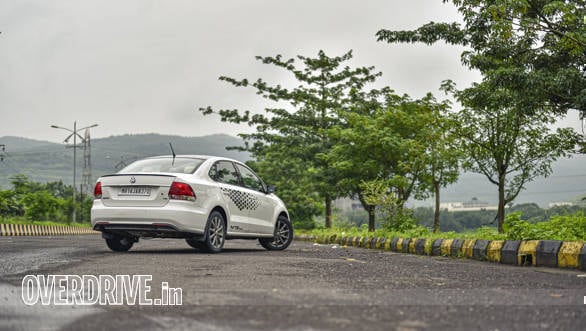
Verdict
At the revised price of Rs 10.99 lakh (ex-showroom) for the Highline Plus variant (now priced at where the TSI Edition was positioned), the Vento doesn't exactly have a loaded features list, missing out on goodies more modern cars get. But it still compares quite favourably against mid-trim variants of the competition like the Hyundai Verna, or even base variants of the Honda City. It even undercuts its stablemate, the Rapid, for a fully-loaded variant, even though the Rapid's base variant starting price is lower. If you prioritise driving pleasure (and solid build quality) above all else, but also want some niceties from factory, the Vento just may have what you're looking for.
Photography: Anis Shaikh
Starts Rs 10.9 Lakhs
1497cc
Manual
100
145
17.8 Kmpl
Starts Rs 9.31 Lakhs
1493cc
Automatic
115
250
-NA-
Starts Rs 7.49 Lakhs
999cc
Automatic
110
175
18.97 Kmpl
Starts Rs 8.78 Lakhs
999cc
Manual
105
175
17.69 Kmpl













